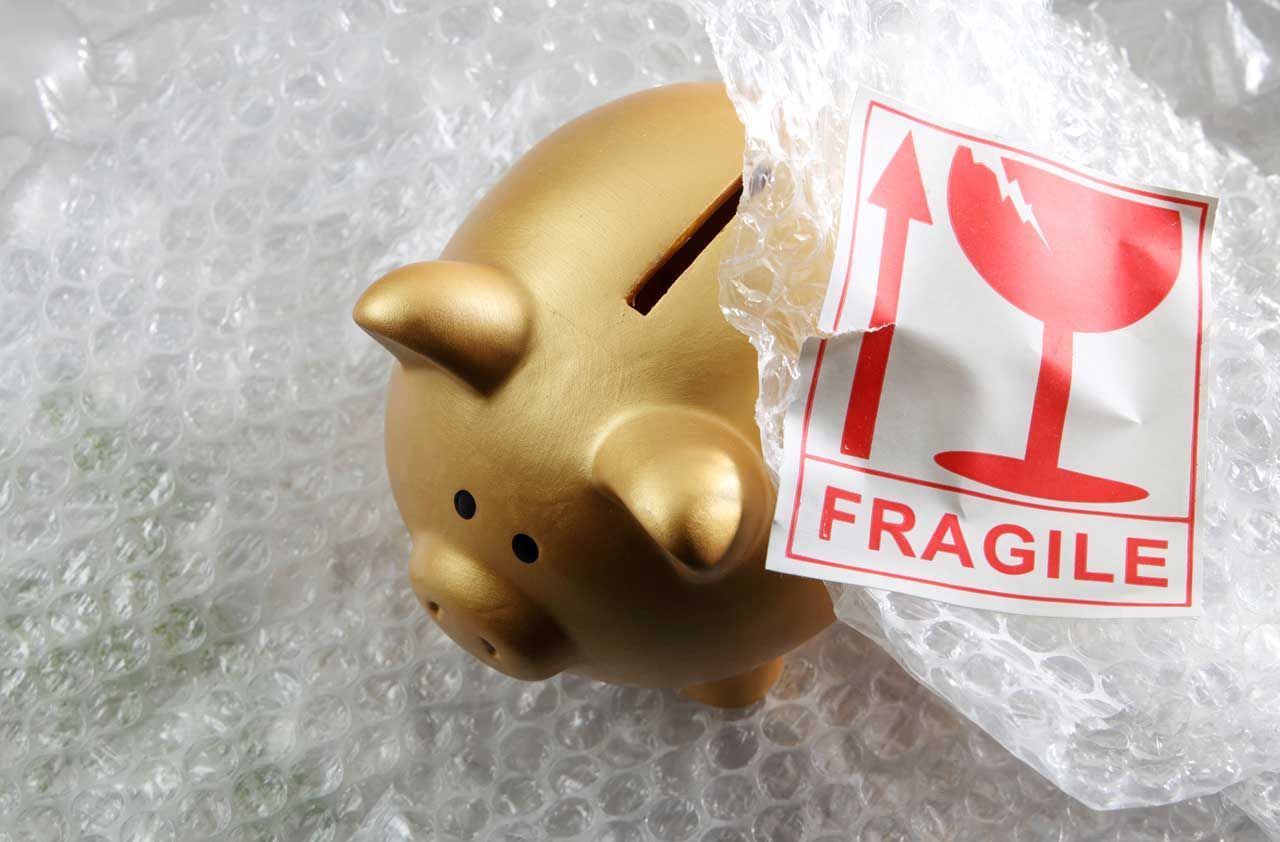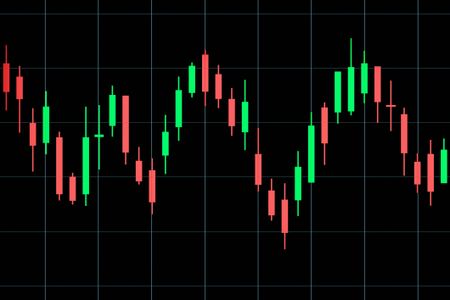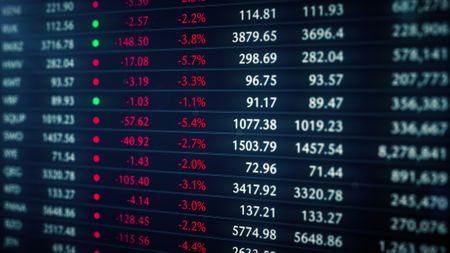5 Ways to Protect Your Portfolio in a Stock Market Correction
When the stock market slides between 10% and 20%, it’s called a correction.


When the stock market slides between 10% and 20%, it’s called a correction. You may not recall the last one because it ended in February 2016, shaving 14% off Standard & Poor’s 500-stock index. Corrections occur an average of every 26 months in a bull market, but waiting times have sometimes been far longer — or shorter.
Some strategists say stocks look pricey, setting the stage for a potential fall. The S&P 500 trades at about 24 times corporate earnings for the past 12 months. That is more expensive than the market has been 90% of the time since 1928, says Jim Stack, president of InvesTech Research and Stack Financial Management. “This is one of the more overvalued markets in history,” he says. “It carries a high degree of risk.”
That doesn’t mean stocks can’t keep climbing. Corrections within a bull market are often temporary reversals that end after a few months. (If a correction extends beyond a 20% drop, it turns into a bear market). Many strategists say the current bull market is supported by a healthy economy, modest inflation and interest rates that remain near historic lows.
Still, if you’re nervous about a correction, here are five moves you can make now, potentially saving you a bundle if the market starts to skid.
Disclaimer
All prices and other data are as of September 5, 2017.

Rebalance Your Portfolio
If you’ve held stocks for a few years, your portfolio may now be tilting excessively toward stocks. For example, say you aim to maintain a mix of 65% in stocks and 35% in bonds. If your stocks have gained 20% while your bond holdings have stayed flat, your mix will have shifted to 69% stocks and 31% bonds.
Waiting for stocks to correct would bring your portfolio back into alignment. But you’ll lock in some profits if you rebalance now — selling some stocks and buying more bonds.
- If you do rebalance, sell stocks that may be most vulnerable to losses in a correction. Technology stocks, for instance, have been the top-performing sector in the S&P 500 this year, gaining an average 25.4%. That has put tech stocks on a precarious perch. “If you’ve had a great run in tech stocks, pull some money off the table,” says Stack.
One way to determine if you own too much tech is to compare your portfolio’s allocation to that of the market. Many brokers provide a portfolio “x-ray” tool that can analyze all your funds and stocks to assess your total exposure to each sector. The S&P 500 currently holds about 23.5% in technology stocks. If your portfolio includes more than that, you’re “overweight” and should scale back to about 20%.
Stack also recommends trimming financial stocks — another top-performing sector that looks susceptible to a fall. Financials make up 14.2% of the S&P 500; if you own a higher percentage, he says, consider cutting back.

Buy Low-Volatility Stocks
A falling market may pull everything down. But big, stable companies with steady revenues and dividends should lose less than the average.
Among ETFs that focus on such stocks, our top choice is iShares Edge MSCI Minimum Volatility USA (USMV, $50.05). The fund emphasizes large, stable businesses such as AT&T (T, $37.09), Johnson & Johnson (JNJ, $129.90) and McDonald’s (MCD, $159.10). Over the past three years, the fund has been 19% less volatile than the S&P 500, yet it has managed to beat the market by an annualized average of 2.3 percentage points a year.
One caveat: The ETF trades at a steep 23 times estimated earnings for the next 12 months, compared with about 18 times for the S&P 500. Low-volatility stocks have rarely been this expensive, and their steep valuation may cap the ETF’s potential for gains.

Emphasize Defensive Stocks
Another way to protect against a downturn is to buy classically defensive stocks, such as health care companies, phone-service providers and utilities.
For broad exposure to health care stocks, we like Guggenheim S&P 500 Equal Weight Health Care ETF (RYH, $174.90), a member of the Kiplinger ETF 20, a list of our favorite exchange-traded funds. The ETF holds 62 stocks, ranging from small biotech firms to large drug companies, medical device makers and insurers. Each stock receives an equal weight in the ETF, resulting in more exposure to small and midsize firms than in a fund that weights stocks by market value. The result has been returns that exceeded the category average by an annualized 0.9 percentage point a year over the past decade, according to Morningstar.
For utilities, we recommend Fidelity MSCI Utilities ETF (FUTY, $35.66). It holds a collection of 75 power producers, regulated utilities, gas distributors and other business. The ETF yields 3.0% and possesses a wafer-thin annual expense ratio of 0.08%. Fidelity brokerage customers can buy it commission-free on the firm’s site.
Among phone-service providers, we like Verizon (VZ, $47.36), the largest U.S. wireless carrier, with 147.2 million subscribers. Verizon is developing revenue streams beyond its core phone service, competing for TV customers with its Fios cable service, expanding into internet advertising and content with purchases of AOL and Yahoo, and providing GPS tracking and similar vehicle telematics services. Verizon isn’t growing fast, and it must spend heavily to upgrade its networks and fend off rivals. But the firm is solidly profitable and has raised its dividend at a 3% annual rate over the past five years — a streak that should continue. Research firm CFRA says Verizon’s hefty yield, at 4.9%, should help support the shares, too.

Hold More Government Bonds
Backed by the “full faith and credit” of the U.S. government, Treasury securities tend to fare exceptionally well during periods of market turmoil. Vanguard Intermediate Term Treasury Fund (VFITX), for instance, returned 13.3% in 2008, when the S&P 500 fell 37%. Over the past decade, the fund has posted a loss in just two calendar years: In 2009, it dropped 1.7%, and it slid 3% in 2013 (including interest payments). The fund currently yields 1.6%.
- The big drawback of Treasuries, of course, is their sensitivity to interest rates: Prices of Treasuries fall as rates rise, and it can take a long time for interest payments to make up for the losses, especially if you own long-term bonds, which are the most sensitive to rate swings.
Nonetheless, rates appear to be boxed in a relatively narrow range for now. Kiplinger expects the yield of the 10-year Treasury bond to be at 2.4% by the end of 2017, up slightly from about 2.11% today.
An ETF that should also hold up well if stocks slump is iShares Core U.S. Aggregate Bond (AGG). Treasuries and government-backed mortgage securities account for about two-thirds of the fund, with the rest in high-quality corporate bonds. The mix pushes the fund’s yield to 2.2%, above that of a pure intermediate-term Treasury fund. But it doesn’t pose additional interest-rate risk. Over the past decade, the ETF has posted negative returns, including interest, in only one calendar year, 2013, when it lost 2%.

Boost Your Cash Reserves
Holding a lot of cash in your portfolio can hurt when the market is rising. But you’ll be happy to have it if stocks swoon, giving you plenty of dry powder to buy shares at lower prices.
As an alternative to money market funds, which yield very little after fees, Stack suggests buying Treasury bills through your broker or directly from the government. T-bills, which you can buy for as little as $100, yield about 1% on an annualized basis, slightly beating rates on most money market funds. If you buy 90-day bills and hold them to maturity, you’ll get all your principal back, plus interest, when the bills come due.
Most online brokers don’t charge fees or commissions when you purchase T-bills. If you buy directly from TreasuryDirect.gov, you can get a slightly higher yield, though it will be fractions of a penny on the dollar for bills maturing in a few weeks or months.
Either way, earning 1% in T-bills will feel better than losing 10% or more in a correction. “Investors tend to be more aggressive during the mature phases of a bull market, when there are no storm clouds on the horizon,” says Stack. “But that is when you should start down a more defensive path.”
Get Kiplinger Today newsletter — free
Profit and prosper with the best of Kiplinger's advice on investing, taxes, retirement, personal finance and much more. Delivered daily. Enter your email in the box and click Sign Me Up.

-
 What the Senate's Vote to Repeal CFPB Bank Overdraft Fees Cap Means For You
What the Senate's Vote to Repeal CFPB Bank Overdraft Fees Cap Means For YouThe Senate voted to overturn the Consumer Financial Protection Bureau's cap on overdraft fees. Here's what you need to know.
By Sean Jackson Published
-
 Ask the Editor: Four Reader Tax Questions
Ask the Editor: Four Reader Tax QuestionsAsk the Editor In our new Ask the Editor series, Joy Taylor, The Kiplinger Tax Letter Editor, answers questions related to filing of tax returns and paying taxes.
By Joy Taylor Published
-
 Stock Market Today: It's Going to Stay Choppy for Stocks
Stock Market Today: It's Going to Stay Choppy for StocksAuto-focus can show us a lot about uncertainty on the ground and in the stock market.
By David Dittman Published
-
 Stock Market Today: Auto Tariffs Send Stocks Lower
Stock Market Today: Auto Tariffs Send Stocks LowerThe main indexes snapped their win streaks after the White House confirmed President Trump will talk about auto tariffs after the close.
By Karee Venema Published
-
 Stock Market Today: Stocks Seesaw After Big Market Rally
Stock Market Today: Stocks Seesaw After Big Market RallyThe latest consumer confidence data showed sentiment remains low.
By Karee Venema Published
-
 Stock Market Today: Markets Celebrate Trump's Tariff Détente
Stock Market Today: Markets Celebrate Trump's Tariff DétenteConsumer discretionary stocks led 10 of the 11 S&P 500 sector groups well into the green.
By David Dittman Published
-
 Stock Market Today: Stocks Swing Higher After Early Slump
Stock Market Today: Stocks Swing Higher After Early SlumpNegative earnings reactions for Nike, FedEx and Micron kept pressure on the main indexes, though.
By Karee Venema Published
-
 Stock Market Today: Stocks Struggle After Big Fed Gains
Stock Market Today: Stocks Struggle After Big Fed GainsAn unexpected rise in existing home sales couldn't save stocks on Thursday.
By Karee Venema Published
-
 Stock Market Today: Stocks Enjoy a Fed Day Relief Rally
Stock Market Today: Stocks Enjoy a Fed Day Relief RallyThe question now is whether Jerome Powell and other policymakers can get the balance right given all the new noise.
By David Dittman Published
-
 Stock Market Today: Stocks Skid Into Another Risk-Off Turn
Stock Market Today: Stocks Skid Into Another Risk-Off TurnThe promise of the AI revolution can't overcome flickering hopes for a "Fed put."
By David Dittman Published
